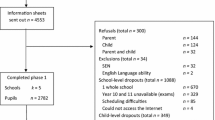Abstract
In the social cultural setup of the world, the differentiation between a man and a boy is almost universally established, with the man representing the evolved, comprehensive, mature and wise end of the spectrum, whereas the boy being the imperfect, meek, ignorant and premature organism. This polarity structures an acutely gendered concurrence, in that, a boy is always defined in a grown man’s world with a lack that also characterizes the female species. The aggrandizing features and the cultural reinforcements of the masculine inadvertently lead to the genesis of a tendency to prioritize this trait as the most desirable and the negation of all that falls outside its predefined markers. With the onset of puberty and the appearances of physiological changes in the body, the young boys with a generous influence of these alterations, tend to assert their superiority over others through both open and covert forms of bullying, the latter often falling within the growing menace of the phenomenon of cyberbullying. This paper attempts to argue that the phenomenon of bullying is both infused and ingrained in the psyche of the young through the primary institutions in the society, that is, the family, the schools, the external world, even often without consciously aiming to do so. The paper charts out the concept of bullying in schools and makes an assessment of the various biological as well as socio-cultural influences which generate this tendency among school boys. Making use of psychosocial data and real-life examples, the paper also suggests how schools, teachers and parents, may tackle bullying by regarding it as a behavioural problem and adopting approaches that bring positive interpersonal connections.
Similar content being viewed by others
Data Availability
All data complies with field standards.
References
Belsey, Bill. (2019). Cyberbullying: An Emerging Threat to the “Always On” Generation. Accessed August 18, 2020 from http://www.billbelsey.com/?cat=13
Braithwaite, J. (2002). Restorative Justice and Responsive Regulation. Oxford University Press.
Connell, R. W. (1995). Masculinities. Polity Press.
Copeland, W., Wolke, D., Angold, A., & Costello, J. E. (2013). Adult psychiatric outcomes of bullying and being bullied by peers in childhood and adolescence. JAMA Psychiatry, 70(4), 419–426. https://doi.org/10.1001/jamapsychiatry.2013.504
Copeland, W. E., Wolke, D., Lereya, S. T., Shanahan, L., Worthman, C., & Costello, J. E. (2014). Childhood bullying involvement predicts low-grade systemic inflammation into adulthood. Proceedings of the National Academy of Sciences of the United States of America, 111(21), 7570–7575. https://doi.org/10.1073/pnas.1323641111
Ferguson, C. J., Miguel, C. S., Kilburn, Jr., John, C., & Sanchez, P. (2007). The effectiveness of school-based anti-bullying programs a meta-analytic review. Criminal Justice Review, 32(4), 401–414.
Harris, N. (2017). Shame in Regulatory Settings. In P. Drahos (Ed.), Regulatory Theory: Foundations and applications (pp. 59–76). Australian National University Press.
Jain, A., Lata, P., Goyal, A. R., Khandelwal, S., & Jain, G. (2015). Sociocultural impact of film celebrities on teenagers: An empirical study. International Journal of Indian Culture and Business Management, 11(3), 308–322. https://doi.org/10.1504/IJICBM.2015.071589
Kakar, S. (1981). The Inner World: A Psycho-analytic Study of Childhood and Society in India. Oxford University Press.
Kowalski, R. (2015). Section II: Overlap Between Cyberbullying and Traditional bullying: Fact or fiction. In E. K. Englander (Ed.), Cyberbullying: Current & Future Research & Directions: A White Paper Submitted to the Institute of Digital Media and Child Development. Institute of Digital Media and Child Development: New York, NY.
Ladd, G. W., Ettekal, I., & Kochenderfer-Ladd, B. (2017). Peer victimization trajectories from kindergarten through high school: Differential pathways for children’s school engagement and achievement? Journal of Educational Psychology, 109(6), 826–841. https://doi.org/10.1037/edu0000177
Olweus, D. (1993). Bullying at Schools: What We Know and What We Can Do. Blackwell.
Reeser, T., & W. (2010). Masculinities in Theory: An Introduction. Wiley Blackwell.
Short, D. (2017). Am I Safe Here?: LGBTQ Teens and Bullying in Schools. UBC Press.
Stein, N. (2007). Bullying, harassment and violence among students. The Radical Teacher, 80, 30–35.
Teasley, M. L. (2014). Shifting from zero tolerance to restorative justice in schools. National Association of Social Workers, 36(3), 131–133.
Thorsborne, M., & Blood, P. (2013). Implementing Restorative Practices in Schools: A Practical Guide to Transforming School Communities. Jessica Kingsley Publishers.
Funding
Not applicable.
Author information
Authors and Affiliations
Corresponding author
Ethics declarations
Conflict of interest
The author declares that he has no conflict of interest.
Ethical Approval
The article meets all standard norms of ethics and does not disrespect, intend to harm or hurt the sentiments of any of the stakeholders in any way. The paper is an informed and theoretical dissertation. All the credits have been duly cited in the list of references and have been acknowledged in the paper. The manuscript is free from plagiarism and has been checked using professional software to screen for plagiarism with a similarity percentage of about 4%.
Additional information
Publisher's Note
Springer Nature remains neutral with regard to jurisdictional claims in published maps and institutional affiliations.
Rights and permissions
Springer Nature or its licensor (e.g. a society or other partner) holds exclusive rights to this article under a publishing agreement with the author(s) or other rightsholder(s); author self-archiving of the accepted manuscript version of this article is solely governed by the terms of such publishing agreement and applicable law.
About this article
Cite this article
Singh, S. The Social Culture of Bullying: Exploring the Institutions of Family and School. Psychol Stud 69, 7–12 (2024). https://doi.org/10.1007/s12646-023-00769-9
Received:
Accepted:
Published:
Issue Date:
DOI: https://doi.org/10.1007/s12646-023-00769-9




